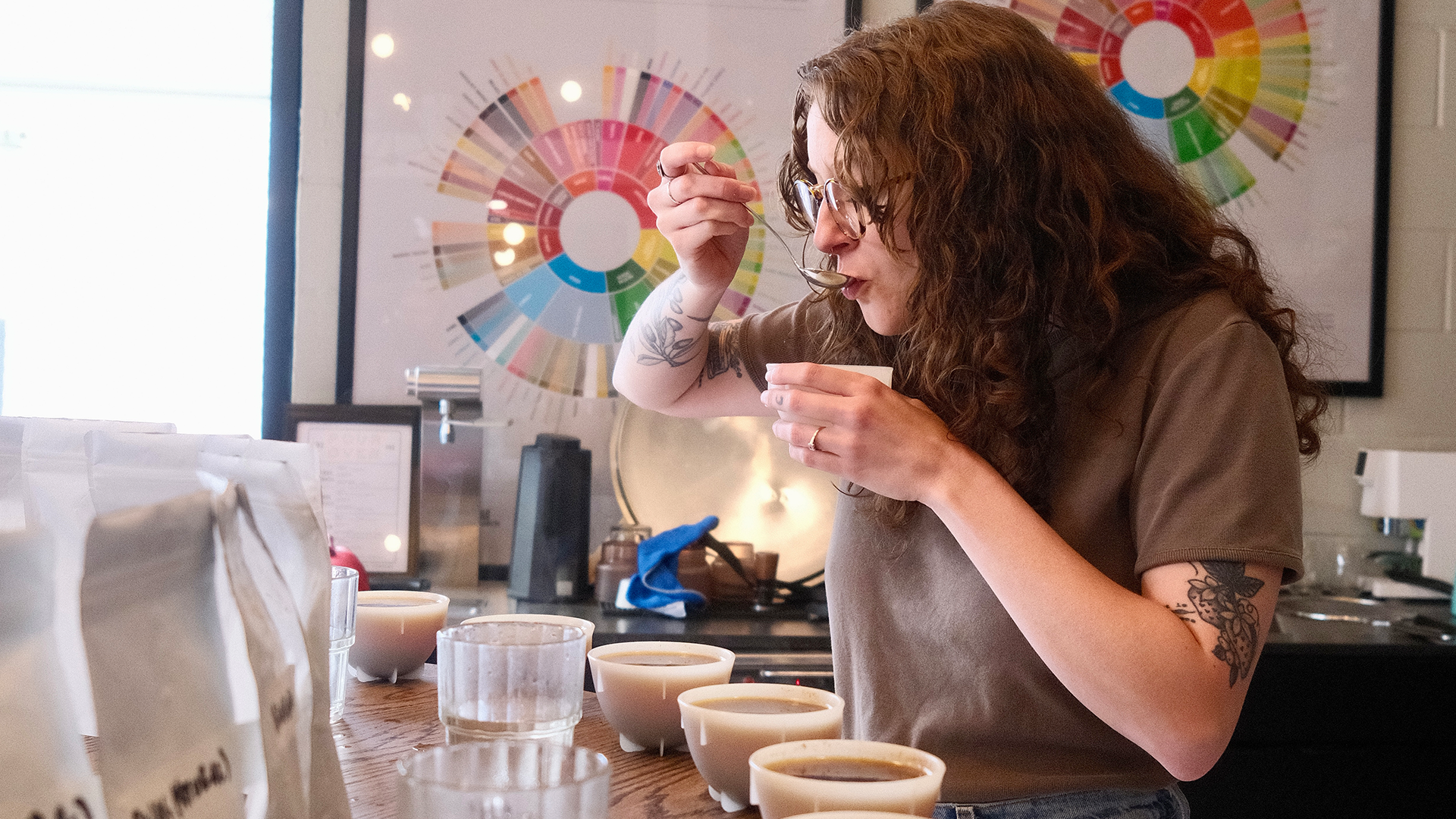Coffee cupping is an intricate ritual most often utilized to test the quality of coffee beans and how they have been roasted. This method of quality control and coffee evaluation is used at all levels in the supply chain. Growers, buyers, roasters, and home brewers all make use of coffee cuppings to ensure that the beans are showcasing their desired tasting notes. The sensory journey of a cupping is a great way to further expand your palate and to become more involved in the world of specialty coffee.
The history of coffee cupping is somewhat blurry, and there is no clear documentation of where or when it was officially invented. Most sources point back to a man named Clarence E. Bickford, a green broker who utilized the technique in the late 19th century to assess the quality of coffee beans. In a modern setting, coffee cuppings can be used to grade specialty coffee. Elements like aroma, acidity, sweetness, bitterness, body, and balance are all kept in mind while trying different types of coffee.

The cupping process is a meticulous affair – beginning with grinding coffee beans to a slightly coarser grind size than used for a french press, using a 1:18 ratio to weigh out a dry dose of 11.5 grams of coffee, adding 207 milliliters of water at 208 degrees fahrenheit, and allowing the coffee to brew. As the water is poured over the bed of coffee, the wet aroma is noted. At the four minute marker, the crust at the top of the cup is broken and the remaining floating grounds are cleaned from the cup. Breaking the crust is done gently to ensure that the grounds that have settled at the bottom of the cup are not disturbed, thereby avoiding any alteration in the extraction of the coffee. The aroma of the coffee is taken note of again upon the breaking of the crust which is an important factor in scoring and grading coffee.
After nine minutes, the coffee is finally ready to be tasted and evaluated by cupping participants. Waiting for the coffee to slightly cool down after brewing is imperative to the tasting process as extreme heat can mask defects in the coffee. A bowl shaped spoon is dipped into the cup, and is then slurped upwards, aerating the coffee through the mouth and coating the palate. Notes can be taken as the coffee is cupped, but discussion of the coffee at the cupping table is delayed until everyone has had a chance to adequately taste each coffee presented. This is done to ensure that nobody is influenced by opinion and that no bias is created.

In most cupping settings, five cups of each coffee presented will be cupped at the table. It is especially important to sample the coffee as much as possible as a buyer to understand what the coffee truly has to offer. After the coffee has been tasted by everyone involved in the cupping, participants can discuss the notes that stood out to them. The coffee is predominantly evaluated on its fragrance/aroma, acidity, sweetness, body, balance, defects, and overall flavor. For those who are new to cuppings and coffee tasting, Not Bad Coffee has a diagram of a coffee tasting wheel with an array of tasting notes that can be attributed to coffee. Their coffee tasting wheel is a great source for putting names to tasting notes, and expanding on your specialty coffee vocabulary.
Coffee cupping serves as a communal experience, fostering connection and dialogue among participants. Whether it's seasoned professionals or curious newcomers, cupping sessions provide a platform for sharing insights, preferences, and discoveries. Through discussion and comparison, individuals deepen their appreciation for coffee while honing their tasting skills, enriching the collective coffee culture.

In essence, coffee cupping transcends mere consumption; it is an opportunity to expand on knowledge and community in the world of specialty coffee. As we immerse ourselves in the ritual of a coffee cupping, we gain a newfound appreciation for the humbling work of growing, roasting, and brewing coffee. So, the next time you enjoy your morning brew, take a moment to reflect on the intricate journey that brought it to your cup, and perhaps consider embarking on your own coffee cupping adventure.
Sources for additional information:


